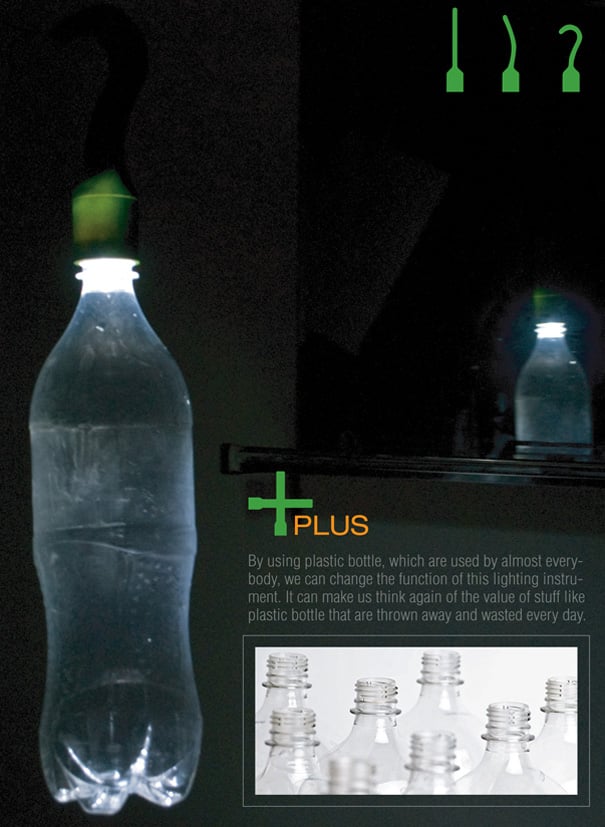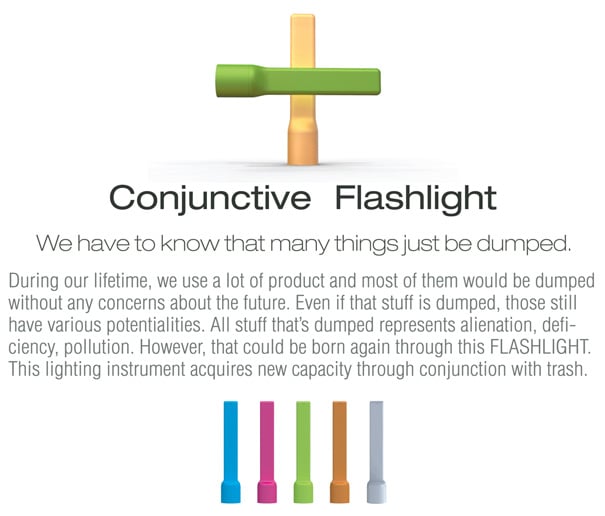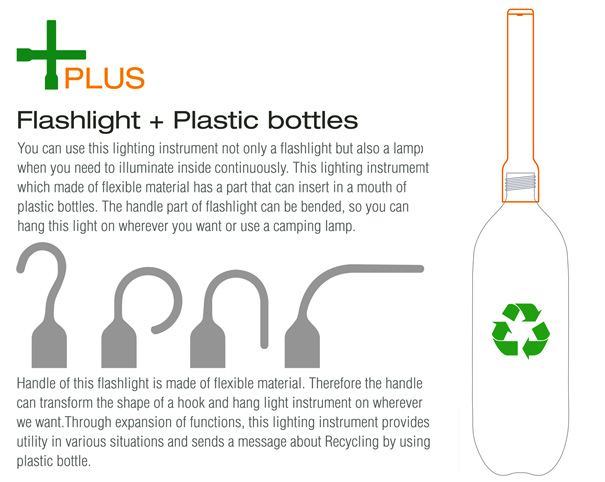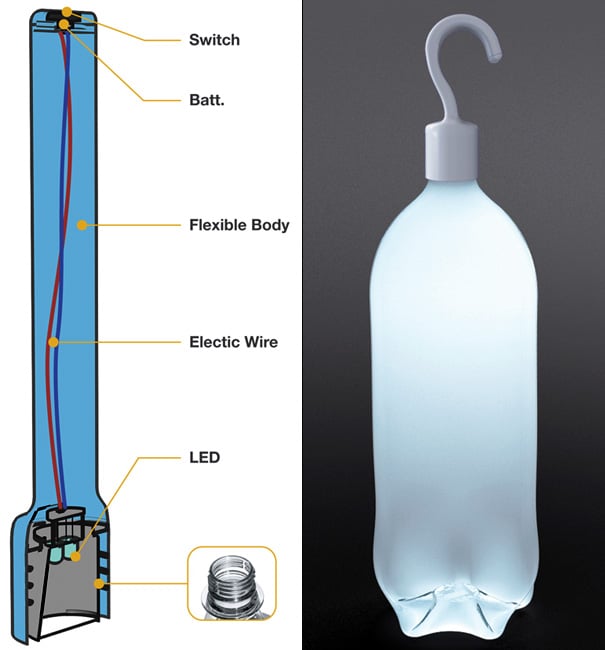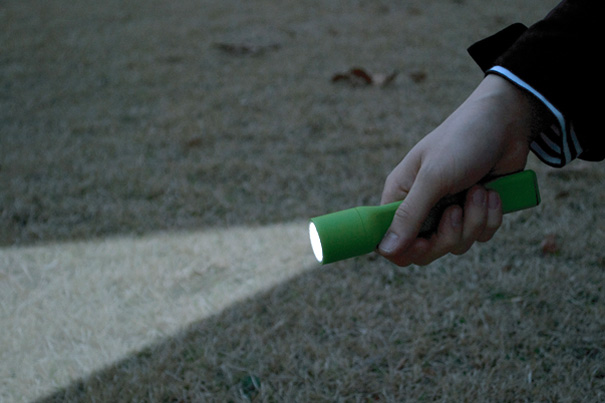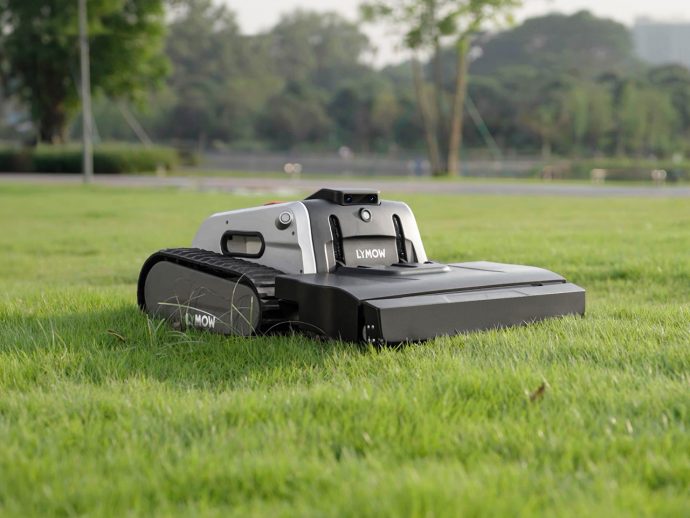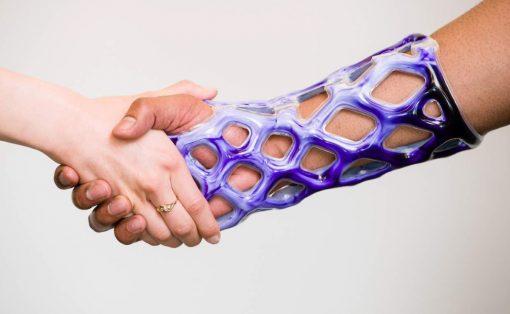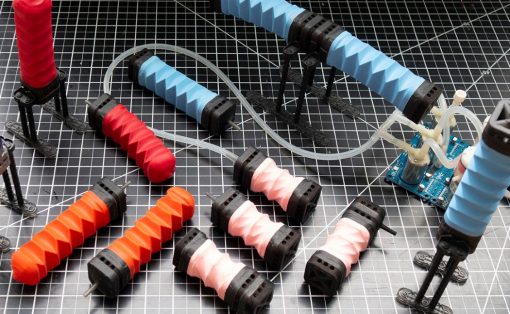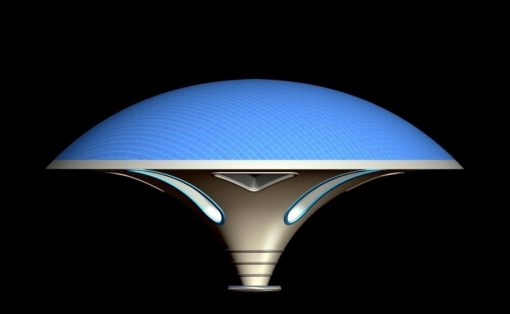Look what we have for you, a home-recycle solution for your PET Bottles! Of course you will need the help of the + (Plus) Conjunctive Flash Light, but that really won’t be a problem. For the moment let’s look at what the designers have to offer: an ingenious flashlight (with a flex-tail) that screws onto the mouth of a standard PET bottle. The result is that you get a makeshift lantern-esque lamp ready to be hung-up in a tent or taken outdoors. Nifty idea, what do you think?
Designers: Lie Zhong-Fa, Lee Sang-Bong & Ji Jung-Ah
